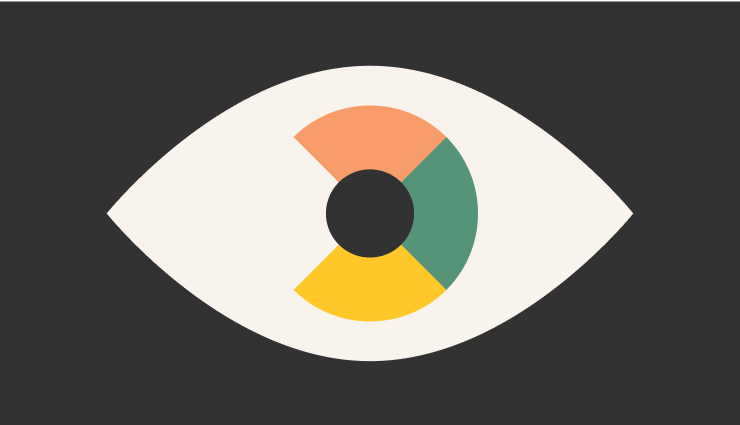Defined as a carefully curated collection of work samples, projects, and accomplishments, an Instructional Design Portfolio is a comprehensive showcase of an individual’s expertise in crafting compelling learning experiences. According to a survey conducted by the eLearning Industry, 73% of hiring managers prioritize the review of portfolios when considering instructional design candidates, highlighting the significant role these portfolios play in recruitment. This visual representation not only exhibits an individual’s skills and capabilities but also demonstrates their ability to apply theoretical knowledge in practical settings, making it an indispensable asset in instructional design.
Instructional Design Portfolio Examples
These professionals have made significant contributions to the field of instructional design through their books, blogs, methodologies, and practical applications, making them noteworthy examples for those interested in exploring the best practices and innovations in the industry.
Michael Allen: Renowned for his expertise in e-learning, Michael Allen is the CEO of Allen Interactions. His SAM (Successive Approximation Model) approach to instructional design has revolutionized the industry.
Connie Malamed: Known as “The eLearning Coach,” Connie Malamed is an expert in visual design for learning. Her blog and podcast offer valuable insights into instructional design techniques.
Julie Dirksen: Author of “Design for How People Learn,” Dirksen is highly regarded for her focus on applying research in cognitive psychology to create effective learning experiences.
Clark Quinn: An influential voice in the e-learning community, Clark Quinn specializes in cognitive science, and his work emphasizes designing learning experiences that align with how humans learn best.
Cathy Moore: Renowned for the “action mapping” approach, Cathy Moore is recognized for creating engaging, scenario-based e-learning and her advocacy for effective instructional design strategies.
Karl Kapp: A leading expert in gamification and learning technologies, Karl Kapp has written several influential books on gamification and its applications in learning.
Cammy Bean: Cammy Bean is a well-known instructional design consultant and blogger, offering practical insights into the industry and sharing real-world examples and strategies for effective instructional design.
What is an Instructional Design Portfolio?
At first glance, a portfolio often seems like a mere compilation of projects completed by a designer over a period of time. However, it serves a more profound purpose by offering insight into the individual’s beliefs, skills, qualifications, academic evidence, training, and experience to prospective recruiters. The instructional design portfolio provides a window into the prospective candidate’s best works, providing a glimpse of their capabilities and expertise for the applied vacancy.
How Instructional Design Portfolio Helps You in Recruiting
Beyond insights gained from interviews concerning an instructional designer’s interpersonal and communication abilities, the portfolio is a valuable means to assess their alignment with job requirements.
Demonstrate Your Skills
The instructional design portfolio functions as a demonstrative tool, showcasing an individual’s abilities and proficiency in crafting learning experiences. It offers concrete evidence of the designer’s capabilities, emphasizing their strengths in instructional design, course development, and educational strategies. By presenting a range of projects, the portfolio elucidates practical applications of theoretical knowledge and problem-solving skills, serving as a testament to the candidate’s competencies.
Attract Potential Employers or Clients
An instructional design portfolio operates as a visual marketing tool, attracting the attention of potential employers or clients. It encapsulates the designer’s best work, leaving a powerful impression by highlighting their expertise and success stories. Through compelling examples, it portrays the candidate as a competent professional capable of delivering effective learning solutions. A well-crafted portfolio serves as a compelling entry point, drawing the interest of those seeking the services or expertise of an instructional designer.
Determine Your Development Needs
Additionally, the portfolio isn’t merely a display of achievements but also a self-assessment tool for the designer. It helps in identifying areas for professional growth and development. By critically evaluating their own work, designers can recognize their strengths and weaknesses, guiding their future learning endeavors and skill enhancement. This self-assessment aids in continual improvement, fostering a proactive approach to professional development within the field of instructional design.
Tips on How to Make a Portfolio That Really Works
Crafting a compelling instructional design portfolio involves creating a standout centerpiece: the Flagship Project. This project encapsulates your prowess, expertise, and problem-solving capabilities. Developing a robust Flagship Project requires a structured approach, from identifying a pertinent problem to delivering an effective solution.
Create the Flagship Project
Follow these steps to ensure your Flagship Project resonates and showcases your skills.
Start with a Problem
Begin your project by identifying a genuine issue within the instructional design sphere. Whether it’s addressing a common learning challenge, improving a training program, or innovating in e-learning methods, select a problem that resonates with the industry’s needs.
Identify the Solution
Formulate a comprehensive solution that addresses the problem. Utilize your expertise in instructional design to craft an innovative approach, integrating best practices, methodologies, and technologies to resolve the identified issue effectively.
Describe the Problem and Solution
Clearly articulate the identified problem and the proposed solution. Communicate the significance of the issue and how your solution aligns with industry standards, emphasizing the unique approach you’re taking to resolve it.
Write a Text-based Storyboard
Develop a detailed text-based storyboard outlining the structure and sequence of your solution. Define learning objectives, content flow, and the instructional strategies employed in a structured narrative.
Mock Up Your Visual Designs
Complement the text-based storyboard with visual representations. Create wireframes, layouts, or visual prototypes that illustrate and enhance the understanding of your instructional approach.
Create a Full Storyboard
Integrate the text-based and visual storyboards into a comprehensive framework. This holistic storyboard provides a unified view of the project, amalgamating textual and visual elements cohesively.
Develop the End-Product
Execute the instructional design plan to create the final product. Utilize various tools and technologies to realize your solution, ensuring it aligns with the storyboard and effectively addresses the identified problem.
Describe Your Process
Document and articulate the methodology and process used in the project’s development. Detail the decision-making process, problem-solving strategies, and the rationale behind the design choices made throughout the project’s lifecycle.
Create the Supporting Project(s)
While the Flagship Project is the focal point of your instructional design portfolio, the Supporting Projects act as complementary pieces, further substantiating your expertise and range of skills. Consider the following strategies when creating your Supporting Projects:
- Diversify Topics and Approaches: Demonstrate versatility by selecting projects that span different subject matters and instructional design methodologies. Showcase your ability to adapt and tailor solutions to various learning needs.
- Highlight Specializations: Utilize these projects to emphasize your expertise in specific areas of instructional design. Whether it’s e-learning modules, interactive training programs, or gamified learning experiences, each Supporting Project should accentuate a particular strength or specialization.
- Show Progression and Growth: Present a range of projects that exhibit your development over time. From initial learning experiences to more advanced and sophisticated designs, illustrate a progression that reflects your continuous learning and skill enhancement within the field.
Land the Paid Project(s)
Securing paid projects not only adds weight to your portfolio but also validates your professional capabilities. Consider the following strategies when pursuing paid projects to enhance your portfolio:
- Freelance Opportunities: Engage in freelance or contract work within the instructional design sphere. These projects offer practical experience and a tangible demonstration of your skills in a professional setting.
- Collaborate with Organizations: Partner with educational institutions or companies seeking instructional design solutions. This collaboration allows you to work on real-world projects, solving actual learning challenges and adding valuable experiences to your portfolio.
- Seek Industry Certifications or Competitions: Participate in industry-related certifications or competitions. Winning or participating in recognized events not only adds prestige to your portfolio but also validates your skills within the instructional design community.
- Client Testimonials or Case Studies: Collect and feature testimonials or case studies from clients you’ve worked with. These authentic testimonials serve as social proof of your capabilities and add credibility to your portfolio.
By the way, this type of project is a key feature of the portfolio of such companies as Raccoon Gang. The instructional design services provided by Raccoon Gang exemplify best practices in the eLearning industry.
Design and Develop the Portfolio Website
Creating a compelling portfolio website plays a crucial role in presenting your instructional design expertise. It serves as a digital showroom that showcases your work, skills, and brand identity. Follow these key steps to design and develop your portfolio website effectively:
Develop Your Brand
Define your brand elements, including your unique selling proposition, visual style, tone of communication, and overall message. Ensure consistency in design and content to reinforce your professional identity.
Choose a Tool
When building your portfolio website, consider different tools that align with your technical skills and design preferences:
Wix or WordPress
Consider user-friendly platforms like Wix or WordPress, which offer customizable templates, easy-to-use interfaces, and a range of functionalities that streamline website development. These platforms are ideal for individuals seeking a simpler yet professional approach to website creation.
Custom Code
For those with coding expertise, developing a portfolio website from scratch allows complete customization and control over design and functionality. Utilizing HTML, CSS, and JavaScript offers the flexibility to create a unique and tailored website.
Hosted Portfolio Platforms
Explore hosted portfolio platforms like Behance, Dribbble, or Adobe Portfolio. These platforms offer simplified ways to showcase your work and often provide networking opportunities within the design community.
Decide What to Include
Carefully curate the content to be included on your portfolio website. Select and organize your best projects, case studies, testimonials, and any additional relevant content that best exemplifies your skills and accomplishments within the instructional design field.
Design the Site
Craft an engaging and user-friendly design. Choose a layout that complements your brand, employs intuitive navigation, and ensures a seamless user experience. Incorporate high-quality visuals and ensure the site’s aesthetics align with your professional image.
Develop the Site
Implement your design by building the actual website. Populate it with selected content, ensure responsive design for different devices, and run necessary tests to guarantee functionality.
Promote your Portfolio
After creating the website:
- Focus on promoting it.
- Utilize social media, professional networks, and industry-related platforms to showcase your portfolio.
- Engage in discussions, share insights, and actively network to drive traffic to your site and increase visibility within the instructional design community.
Useful Resources
Education is the passport to the future, for tomorrow belongs to those who prepare for it today.” – Malcolm X
Design Tools:
- Adobe Creative Suite: Offers software like Photoshop, Illustrator, and InDesign, enabling the creation of high-quality visuals and design elements.
- Canva: A user-friendly graphic design platform with templates for creating visual content.
- Articulate 360: A suite of tools for creating interactive and engaging e-learning content.
Portfolio Platforms:
- Behance: A platform to showcase creative work, connect with professionals, and explore inspiration.
- WordPress and Wix: User-friendly website building platforms for creating professional portfolios.
Learning and Development Resources:
- Learning Management Systems (LMS): Platforms like Open edX, Moodle, Canvas, and Blackboard for understanding e-learning systems.
- TED Talks and LinkedIn Learning: Platforms offering insightful talks and courses on instructional design and related topics.
Instructional Design Blogs and Communities:
- eLearning Industry: A hub for articles, trends, and resources in the e-learning and instructional design field.
- Instructional Design Central: Provides tips, tools, and resources for instructional designers.
- LinkedIn Groups (e.g., Instructional Designers Community): Joining professional groups offers networking opportunities and valuable discussions.
Books and Publications:
- “Design for How People Learn” by Julie Dirksen: A practical guidebook for creating effective learning experiences.
- “The Accidental Instructional Designer” by Cammy Bean: Offers insights and strategies for those transitioning into instructional design.



